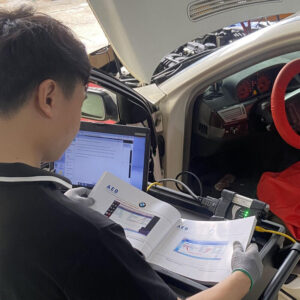
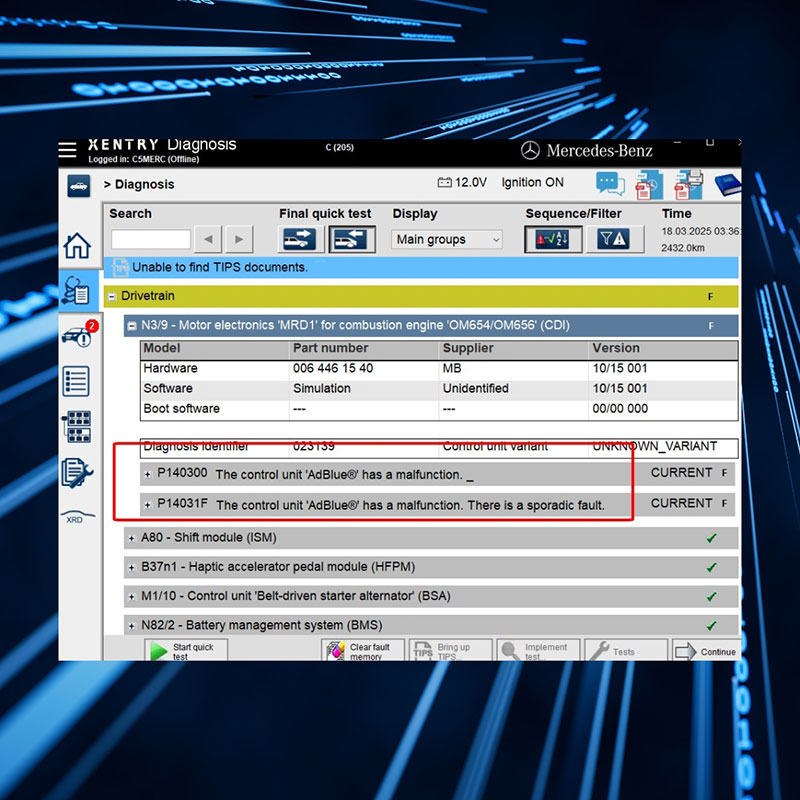
How to Fix Mercedes Fault Code P1403
Contents
- 1. Decoding the Mercedes P1403 Fault Code
- 2. Symptoms of P1403 Fault Code in Mercedes Vehicles
- 1. Check Engine Light (CEL) Illumination
- 2. Engine Hesitation or Stuttering
- 3. Rough Idle
- 4. Reduced Engine Performance
- 5. Fuel Economy Issues
- 6. Failed Emissions Tests
- 7. Temporary Loss of Throttle Response
- 8. Lack of Power or Top Speed Limitation
- 9. No Visible Smoke
- 3. Common Culprits Behind the Mercedes P1403 Error
- 4. Essential Tools for Diagnosing the P1403 Error
- 5. Step-by-Step Guide to Diagnosing the P1403 Fault Code
- 5.1. Preliminary Scan and Code Verification:
- 5.2. Visual Inspection of the EGR System:
- 5.3. Testing the Mass Airflow Sensor MAF/HFM:
- 5.4. Testing Vacuum Supply and Lines (for vacuum-operated EGR systems):
- 5.5. Testing the EGR Valve Electrical Circuit:
- 6. Step-by-Step Guide to Repairing the P1403 Fault Code
- 6.1. Cleaning or Replacing the EGR Valve:
- 6.2. Addressing Vacuum System Issues (for vacuum-operated EGR systems):
- 6.3. Repairing Electrical Issues:
- 6.4. Dealing with MAF/HFM Sensor Issues:
- 7. Post-Repair Verification: Ensuring the Fix
- 7.1. Reset Fault Codes:
- 7.2. Perform Adaptation Process:
- 7.3. Test Drive Procedure:
- 8. Preventive Maintenance for the EGR System
- Conclusion
The Mercedes fault code P1403 signals a potential hiccup within your vehicle’s Exhaust Gas Recirculation EGR system, impacting emissions and performance. At autoexplain.com, we’re dedicated to providing you with the knowledge and resources to tackle this issue effectively, ensuring your Mercedes runs smoothly and efficiently. Let’s delve into the intricacies of the P1403 error, explore its causes, and guide you through a comprehensive diagnostic and repair process, empowering both seasoned mechanics and aspiring technicians. Understanding this diagnostic trouble code is the first step towards resolving exhaust recirculation malfunctions and maintaining optimal engine function, addressing concerns related to engine start problems and low EGR flow.
1. Decoding the Mercedes P1403 Fault Code
The Mercedes fault code P1403 is a diagnostic trouble code DTC that your vehicle’s Engine Control Module ECM sets when it detects an anomaly within the Exhaust Gas Recirculation EGR system. Specifically, this code often points to “Exhaust Flap Control Circuit High” or indicates that the “EGR rate is too low,” the precise definition can vary slightly depending on the specific Mercedes-Benz model and engine type. The EGR system plays a vital role in reducing harmful nitrogen oxide NOx emissions by recirculating a measured amount of exhaust gases back into the engine’s combustion chamber. This process lowers combustion temperatures, thereby decreasing NOx formation. When the ECM registers a P1403 code, it signifies that the intended EGR flow is not being achieved, or the control circuit for the exhaust flap, if equipped, is experiencing a high voltage situation. This discrepancy can trigger a cascade of issues, affecting your vehicle’s emissions, performance, and even its ability to start. Recognizing the nuances of this Mercedes-Benz diagnostic trouble code is crucial for effective troubleshooting.
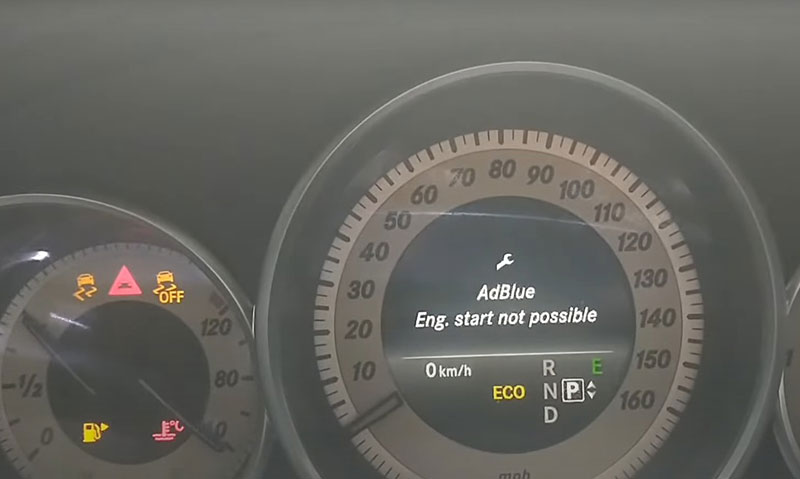
2. Symptoms of P1403 Fault Code in Mercedes Vehicles
1. Check Engine Light (CEL) Illumination
The most immediate symptom is the illumination of the check engine light on the dashboard. This is a clear indication that the vehicle’s onboard computer has detected a problem with the EGR system.
2. Engine Hesitation or Stuttering
Drivers may experience hesitation or stuttering when accelerating, similar to the sensation of the brakes being applied suddenly while pressing the throttle. This is often due to the EGR valve not functioning correctly, causing irregular engine performance.
3. Rough Idle
A rough or unstable idle can occur if the EGR system is not recirculating exhaust gases properly. This might be accompanied by vibrations or a noticeable decrease in engine smoothness.
4. Reduced Engine Performance
Vehicles with a P1403 code may exhibit reduced power output, making them feel sluggish or underpowered. This is particularly noticeable during acceleration or when driving uphill.
5. Fuel Economy Issues
Inefficient EGR operation can lead to decreased fuel efficiency. The engine may consume more fuel than usual due to the need to compensate for poor combustion conditions.
6. Failed Emissions Tests
A malfunctioning EGR system can cause vehicles to fail emissions tests due to increased NOx emissions. This is because the EGR system plays a crucial role in reducing nitrogen oxide emissions by recirculating exhaust gases.
7. Temporary Loss of Throttle Response
In some cases, the engine may temporarily lose throttle response or enter a reduced power mode, especially if the EGR valve is leaking or not closing properly.
8. Lack of Power or Top Speed Limitation
Some drivers report that their vehicle tops out at lower speeds than usual, similar to being in a “limp mode,” although this might not always be accompanied by a check engine light.
9. No Visible Smoke
Interestingly, the absence of visible smoke from the exhaust does not necessarily rule out EGR issues. The system might still be malfunctioning even if there is no visible smoke
3. Common Culprits Behind the Mercedes P1403 Error
Several underlying issues can trigger the Mercedes fault code P1403. Identifying the root cause is the first step towards a successful repair. Here are some of the most common reasons for this diagnostic trouble code:
-
Carbon Buildup in the EGR Valve and Passages: This is a frequent problem, especially in diesel engines. Over time, carbon deposits from the exhaust gases can accumulate within the EGR valve and the passages that direct exhaust flow. This buildup can restrict or even completely block the movement of the EGR valve, preventing it from opening or closing properly and leading to insufficient EGR flow.
-
Faulty EGR Valve: The EGR valve itself can be the source of the problem. It may be mechanically damaged, such as being stuck open or closed due to internal corrosion or wear. Alternatively, the valve’s electrical components, such as the solenoid or position sensor, might be malfunctioning, preventing the valve from responding correctly to signals from the ECM.
-
Electrical Issues: Problems within the electrical circuits controlling the EGR system can also lead to a P1403 code. This can include damaged wiring, corroded or loose electrical connections at the EGR valve or the ECM, or a faulty EGR control solenoid, which is responsible for actuating the valve based on signals from the ECM.
-
Vacuum System Problems: Some Mercedes models utilize a vacuum-operated EGR valve. In such systems, leaks or blockages in the vacuum lines that supply vacuum to the EGR valve can prevent it from functioning correctly. A faulty vacuum pump or a malfunctioning vacuum control solenoid can also contribute to this issue.
-
Mass Airflow Sensor MAF/HFM Issues: The Mass Airflow Sensor plays a crucial role in providing the ECM with data about the amount of air entering the engine. If the MAF sensor is faulty and sends incorrect readings, the ECM may miscalculate the required EGR flow, potentially triggering the P1403 code.
-
Air Filter System Leaks: While less common, leaks in the air filter box or the intake air ducts after the MAF sensor can affect the accuracy of the airflow readings. Unmetered air entering the system can lead to incorrect EGR operation and potentially set the P1403 code.
-
Engine Start Not Possible Error: In certain Mercedes-Benz models, the P1403 code can be associated with an “Eng Start Not Possible” error. This indicates a more severe EGR-related malfunction that is preventing the engine from starting, often due to the EGR valve being stuck in a position that interferes with the intake of fresh air.
Understanding these potential causes will help you or your mechanic narrow down the diagnosis and implement the appropriate repair.
4. Essential Tools for Diagnosing the P1403 Error
To accurately diagnose and resolve the Mercedes fault code P1403, having the right tools is essential. Here’s a list of the necessary and optional tools you’ll likely need:
| Tool | Purpose |
| Mercedes Star Diagnostic Tool | Essential for reading Mercedes-specific fault codes, accessing live data, and performing system tests and adaptations. |
| Xentry Diagnosis Software | The software that runs on the Mercedes Star Diagnostic Tool, providing comprehensive diagnostic capabilities. |
| Basic Mechanic’s Toolset | Includes socket sets, screwdrivers, pliers, and wrenches for accessing and removing components. |
| Digital Multimeter | Used to check electrical voltage, continuity, and resistance in the EGR valve circuit and related components. |
| Vacuum Pump and Gauge | For testing the vacuum supply and the operation of vacuum-actuated EGR valves and components. |
| EGR Valve Cleaner Spray | Specifically formulated to dissolve and remove carbon deposits from the EGR valve and passages. |
| Safety Glasses and Gloves | Essential personal protective equipment to ensure safety when working with automotive systems and chemicals. |
| Shop Towels and Cleaning Supplies | For general cleaning and wiping away spills or debris. |
| Compressed Air Source | Useful for cleaning EGR passages and components after applying cleaner. |
| Torque Wrench | Necessary for ensuring that components, especially the EGR valve, are reinstalled to the manufacturer’s specified torque settings. |
Having these tools readily available will streamline the diagnostic and repair process, allowing for accurate testing and proper component handling.
5. Step-by-Step Guide to Diagnosing the P1403 Fault Code
Diagnosing the Mercedes fault code P1403 requires a systematic approach to pinpoint the underlying cause. Follow these step-by-step instructions for an effective diagnostic procedure:
5.1. Preliminary Scan and Code Verification:
-
Connect your Mercedes Star Diagnostic Tool to the vehicle’s diagnostic port OBD-II port, usually located under the dashboard.
-
Turn on the ignition without starting the engine.
-
Launch the Xentry Diagnosis software on your diagnostic tool.
-
Perform a full system scan to identify all stored fault codes.
-
Verify that the P1403 error code is present and note down any other related fault codes, as these may provide additional clues.
-
Record the exact description of the P1403 code as provided by the diagnostic tool, as it may offer specific details about the nature of the fault such as “Exhaust Flap Control Circuit High” or “EGR rate too low”.
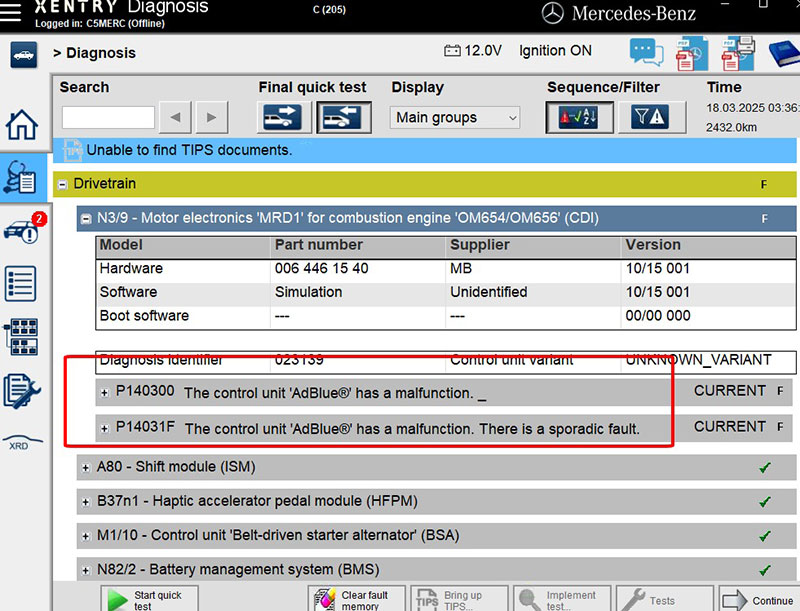
5.2. Visual Inspection of the EGR System:
-
Locate the EGR valve and its associated components, including vacuum lines if applicable and electrical connectors. Refer to your vehicle’s repair manual if needed.
-
Carefully inspect all accessible vacuum lines for any signs of disconnection, cracks, leaks, or blockages. Ensure they are securely attached to their respective ports.
-
Thoroughly examine all electrical connectors related to the EGR valve, the EGR control solenoid, and the MAF sensor. Look for any damage to the connectors themselves, bent or corroded pins, or loose connections.
-
Visually inspect the area around the EGR valve for any obvious signs of carbon buildup or exhaust leaks, such as black soot deposits.
5.3. Testing the Mass Airflow Sensor MAF/HFM:
-
Using the Xentry Diagnosis software, access the live data stream for the MAF sensor.
-
With the engine at operating temperature and idling, observe the airflow readings. Compare these readings to the expected values provided in your vehicle’s service manual or the following general guidelines:
-
At approximately 10°C intake air temperature: 600 ± 25 mg/stroke
-
At approximately 20°C intake air temperature: 580 ± 25 mg/stroke
-
At approximately 30°C intake air temperature: 560 ± 25 mg/stroke
-
-
If the MAF sensor readings are significantly outside of these ranges or consistently read 0 mg/stroke, it may indicate a faulty sensor.
-
Before replacing the MAF sensor, try cleaning its sensing element with a specialized MAF sensor cleaner, following the product instructions carefully. Ensure the sensor is completely dry before reinstalling and retesting.
5.4. Testing Vacuum Supply and Lines (for vacuum-operated EGR systems):
-
Locate the pressure converter that controls vacuum to the EGR valve.
-
Using a vacuum pump and gauge, measure the vacuum at the pressure converter with the engine idling. The vacuum reading should typically be between 700 and 900 mbar. Consult your vehicle’s service manual for the specific vacuum pressure range for your model.
-
Systematically inspect all vacuum lines connected to the EGR valve, pressure converter, and vacuum pump for any leaks, cracks, or disconnections. Repair or replace any damaged lines.
-
Test the EGR valve’s vacuum capsule by applying vacuum directly to it using the vacuum pump. Observe if the valve stem moves smoothly and holds vacuum. If the diaphragm is leaking or the valve is sticking, the EGR valve is likely faulty.
5.5. Testing the EGR Valve Electrical Circuit:
-
Disconnect the electrical connector from the EGR valve.
-
Using a digital multimeter, check for proper voltage supply to the EGR valve connector with the ignition switched on but the engine not running. You should typically see a voltage of around 12V, but refer to your vehicle’s wiring diagram for the exact specification.
-
Measure the resistance in the control circuit between the EGR valve connector and the ECM connector. Consult the vehicle’s wiring diagram to identify the correct pins. A high or infinite resistance indicates an open circuit, while a very low resistance suggests a short circuit.
-
Check for shorts to ground or power in the EGR valve’s electrical circuit. Using the multimeter in continuity mode, check for continuity between the terminals of the EGR valve connector and a known good ground point on the vehicle’s chassis. There should be no continuity. Similarly, check for shorts to a positive power source when the ignition is off.
-
If your vehicle has an EGR control solenoid, test its resistance according to the manufacturer’s specifications. An out-of-range resistance indicates a faulty solenoid.
By meticulously following these diagnostic steps, you can effectively pinpoint the root cause of the Mercedes P1403 fault code. Once the diagnosis is complete, you can proceed with the necessary repairs. If you encounter any difficulties or are unsure about any of these steps, consulting a qualified Mercedes-Benz technician is always recommended. Remember that autoexplain.com offers a platform where you can seek expert guidance and support for complex vehicle issues.
6. Step-by-Step Guide to Repairing the P1403 Fault Code
Once you have accurately diagnosed the cause of the Mercedes P1403 fault code, you can proceed with the necessary repairs. Here’s a step-by-step guide for the common repair procedures:
6.1. Cleaning or Replacing the EGR Valve:
-
Locate the EGR valve on your engine. Refer to your vehicle’s repair manual for its exact location and removal instructions.
-
Disconnect the electrical connector and any vacuum lines attached to the EGR valve. Take note of their original positions for correct reassembly.
-
Carefully remove the bolts or fasteners that secure the EGR valve to the engine.
-
Once the valve is removed, inspect it for heavy carbon buildup, especially around the valve seat and pintle.
-
Thoroughly clean the carbon deposits using a dedicated EGR valve cleaner spray. Follow the instructions on the cleaner product. You may need to use a soft brush or pick to remove stubborn deposits. Be careful not to damage the valve components during cleaning.
-
Inspect the EGR valve for any signs of mechanical damage, such as a bent valve stem, cracks, or corrosion. If the valve is damaged or if cleaning does not restore its proper function, it will need to be replaced with a new one.
-
When reinstalling the EGR valve, always use a new gasket to ensure a proper seal.
-
Tighten the mounting bolts to the manufacturer’s specified torque settings using a torque wrench. Over-tightening can damage the valve or the threads.
-
Reconnect the electrical connector and any vacuum lines, ensuring they are securely attached.
6.2. Addressing Vacuum System Issues (for vacuum-operated EGR systems):
-
If you identified damaged vacuum lines during the diagnostic process, replace them with new lines of the correct size and type. Ensure they are routed correctly and securely connected.
-
If the vacuum pump was found to be faulty, replace it with a new one.
-
If a vacuum control solenoid was malfunctioning, replace it with a new, genuine Mercedes-Benz part or an equivalent high-quality replacement.
-
After making any repairs to the vacuum system, use a vacuum pump and gauge to verify that the system is holding the correct vacuum pressure at the EGR valve and other relevant components.
6.3. Repairing Electrical Issues:
-
If you found damaged wiring, repair it by splicing in new wire of the same gauge and properly insulating the connections. Consider using heat-shrink tubing for a durable and weather-resistant repair.
-
Clean any corroded electrical connections with a wire brush or electrical contact cleaner. Ensure that all connectors are firmly seated and locked in place.
-
If the EGR control solenoid was found to be electrically faulty, replace it with a new one.
6.4. Dealing with MAF/HFM Sensor Issues:
-
If cleaning the MAF sensor resolved the issue, ensure it is securely reinstalled and its electrical connector is properly attached.
-
If the MAF sensor was determined to be faulty and cleaning did not restore its proper function, replace it with a new, genuine Mercedes-Benz MAF sensor or a high-quality equivalent from a reputable manufacturer like Bosch.
-
Ensure the connector pins on the new sensor and the wiring harness are clean and making good contact.
7. Post-Repair Verification: Ensuring the Fix
After completing the necessary repairs, it’s crucial to perform the following steps to verify that the Mercedes P1403 fault code has been resolved and the EGR system is functioning correctly:
7.1. Reset Fault Codes:
-
Connect your Mercedes Star Diagnostic Tool to the vehicle’s diagnostic port.
-
Turn on the ignition without starting the engine.
-
Launch the Xentry Diagnosis software.
-
Navigate to the fault code memory and clear all stored fault codes, including the P1403 code.
7.2. Perform Adaptation Process:
-
Using the Xentry Diagnosis software, navigate to the adaptation menu or the engine control unit functions.
-
Look for the EGR valve adaptation or teach-in procedure. The exact name and location of this function may vary depending on your vehicle model and the software version.
-
Select the EGR valve adaptation procedure and carefully follow the on-screen instructions provided by the diagnostic tool. This process allows the ECM to learn the new position or characteristics of the EGR valve, especially if it has been cleaned or replaced.
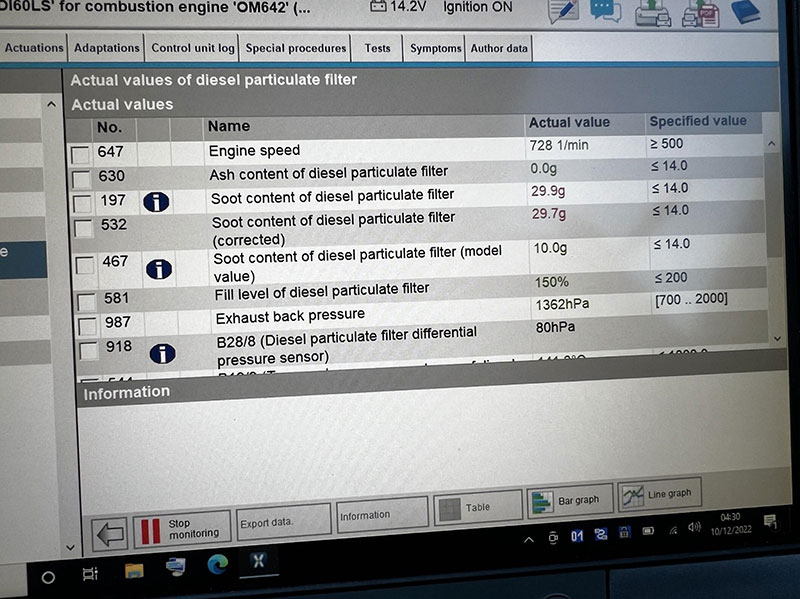
7.3. Test Drive Procedure:
-
Start the engine and allow it to reach its normal operating temperature.
-
Perform a test drive under various driving conditions to allow the EGR system to operate through its full range.
-
For vehicles with an automatic transmission: Engage “D” drive with your foot firmly on the brake for 2-3 minutes. Then, shift to neutral and apply full throttle intermittently for a few seconds at a time.
-
For vehicles with a manual transmission: Perform frequent gear shifts while the engine is warming up. Once at operating temperature, apply full throttle intermittently while the vehicle is stationary and in neutral, ensuring it is safe to do so.
-
After the test drive, reconnect the Mercedes Star Diagnostic Tool and perform another system scan to check if the P1403 fault code or any other related codes have reappeared.
If the P1403 code does not return after the repair, adaptation, and test drive, the issue has likely been successfully resolved. However, if the code reappears, further diagnosis may be necessary to identify any remaining or secondary issues.
8. Preventive Maintenance for the EGR System
To help prevent the recurrence of the P1403 fault code and maintain the health of your Mercedes-Benz EGR system, consider implementing the following preventive maintenance measures:
-
Use High-Quality Fuel and Fuel System Cleaners: Using premium fuel and regularly adding a reputable fuel system cleaner can help minimize carbon buildup within the engine and EGR system, especially in diesel engines.
-
Replace the Air Filter Regularly: A clean air filter ensures proper airflow into the engine. A restricted air filter can negatively impact the air-fuel mixture and potentially affect EGR operation. Follow the manufacturer’s recommended replacement intervals for your vehicle’s air filter.
-
Schedule Periodic Intake Cleaning Services: Over time, carbon deposits can accumulate in the intake manifold and EGR passages. Consider having a professional intake cleaning service performed at the recommended intervals to remove these deposits.
-
Perform Long-Distance Driving Occasionally: Short trips, especially in diesel vehicles, can lead to increased carbon buildup in the EGR system because the engine may not reach optimal operating temperatures for extended periods. Regular long-distance driving can help burn off some of these deposits.
-
Run Regular Diagnostic Scans: Periodically using a diagnostic tool to scan your vehicle for any pending or stored fault codes can help catch potential issues early, before they escalate into more significant problems like a P1403 error.
By incorporating these preventive maintenance practices into your vehicle care routine, you can significantly reduce the likelihood of EGR system malfunctions and keep your Mercedes running smoothly and efficiently for years to come.
Conclusion
The Mercedes P1403 fault code, while concerning, can usually be resolved with proper diagnosis and repair. The most common causes—carbon buildup, vacuum leaks, and electrical issues—are all fixable with the right tools and approach. By following this guide, you can restore your Mercedes to optimal performance and emissions compliance.
For professional diagnostic, coding, and programming support, contact AutoExplain. We specialize in solving complex vehicle issues with expert guidance. Get in touch via WhatsApp at +1(936)2896695 for assistance!

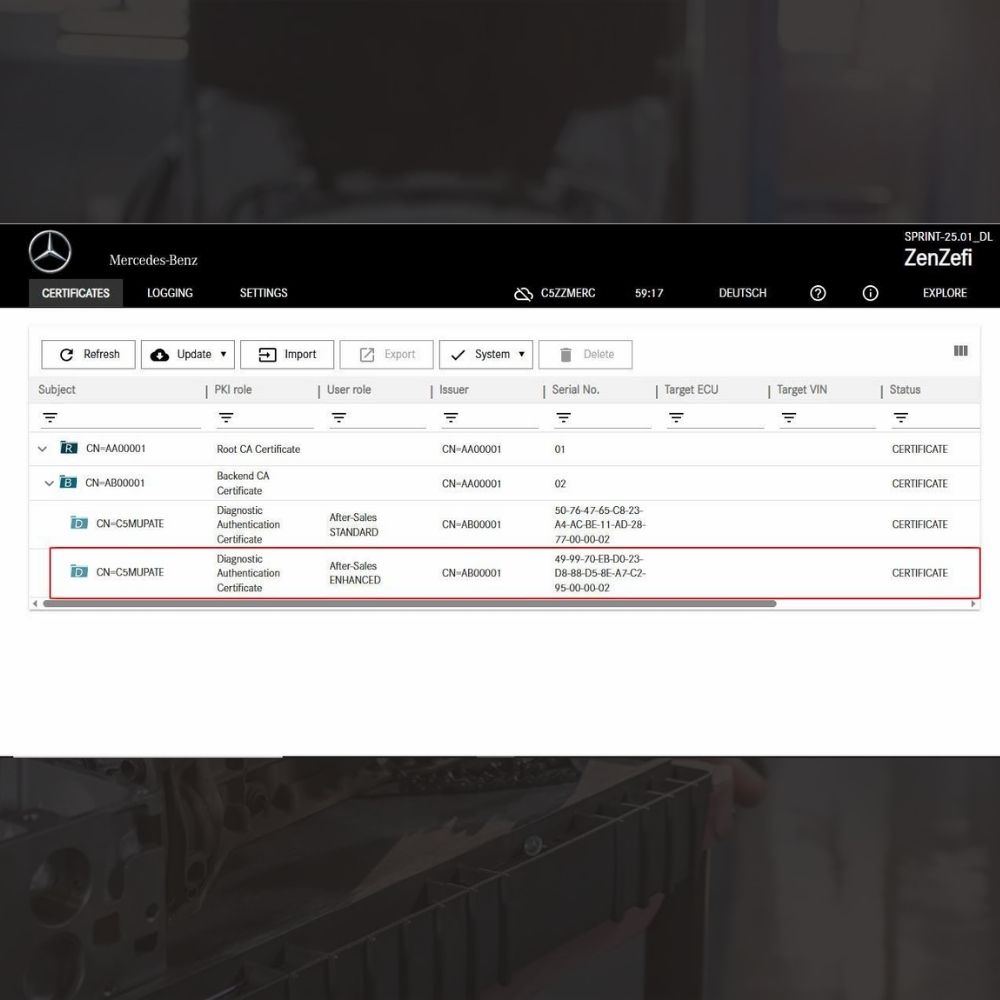
New Mercedes Car Coding Solution with ZenZefi certificate for DTS Monaco 9.02
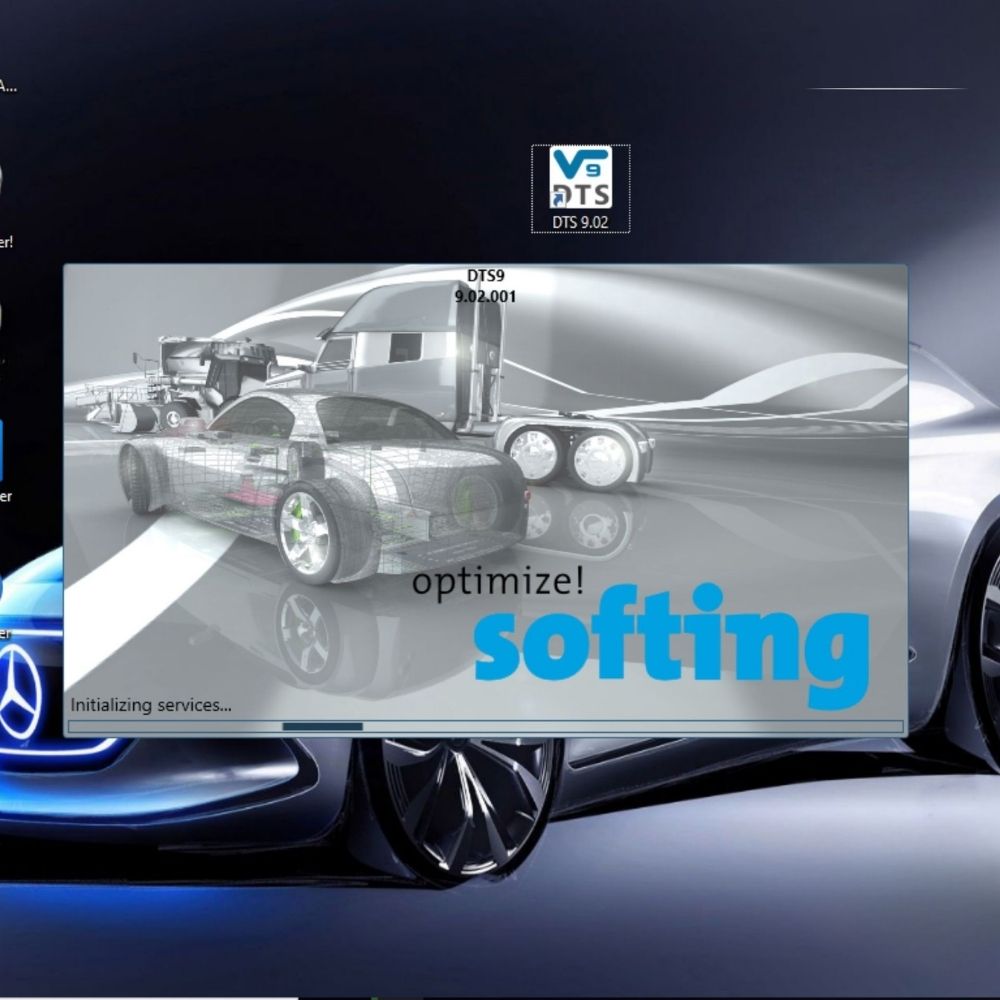
What is DTS Monaco? Key Functions of DTS Monaco Software
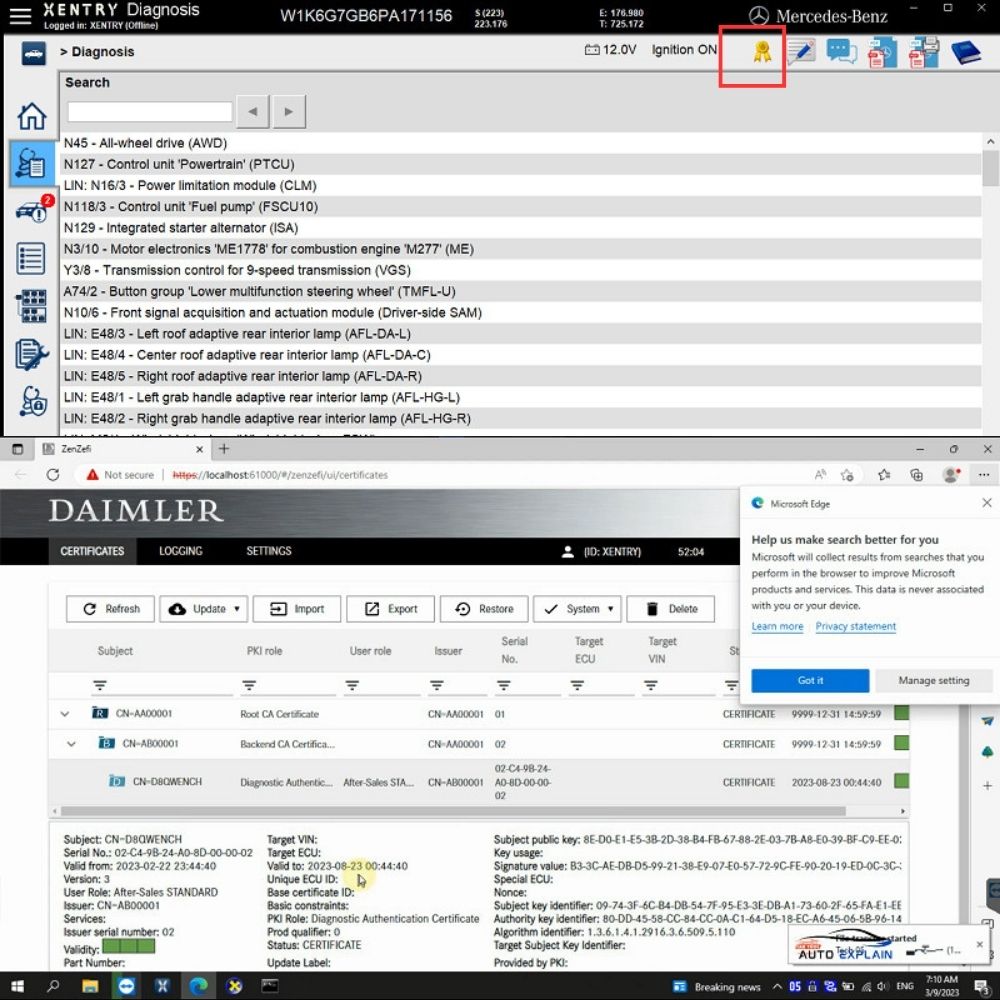
What is the Xentry Certificate Zenzefi? Why You Need It, and When It Is Required?



New Mercedes Car Coding Solution with ZenZefi certificate for DTS Monaco 9.02



